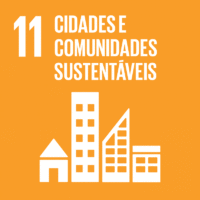Ciência_Iscte
Publicações
Descrição Detalhada da Publicação
Conservation of Historic Stone Buildings
Título Documento
Caderno de resumos do curso internacional Practices in Architecture. Constructions in Stone
Ano (publicação definitiva)
2015
Língua
Inglês
País
Portugal
Mais Informação
--
Web of Science®
Esta publicação não está indexada na Web of Science®
Scopus
Esta publicação não está indexada na Scopus
Google Scholar
Esta publicação não está indexada no Google Scholar
Esta publicação não está indexada no Overton
Abstract/Resumo
Conservation of historic buildings requires both a preliminary and multidisciplinary study. Surveys and analyses - historical, architectural, archaeological, structural, constructive, analyses of the materials, etc. - lead to a correct diagnosis. The goal is to understand all aspects of the building in depth, its evolution over time (constructions and further interventions), as well as to discover the causes of degradation. These data obtained from documentation in situ or in the laboratory lend support to the conservation project and lead to an effective intervention. Constructions in stone require a particular type of study. Stonework is often apparent, original, or the result of a recent trend to remove all the covering from walls and ceilings to reveal the stone beneath. The survey has to be detailed; it is necessary to study the stereotomy and to inventory each stone, its type and alteration pattern. The interior part of the structure the invisible one also has to be analysed. The project must determine what surveys and studies have to be done, based on the characteristics of building and the goal of the intervention. Different phases of analyses are used to specify diagnostics on a progressive basis. I will explore this issue and the methodology using illustrations from some of my conservation projects. The Cais das Colunas Dismantling Project. Dismantling occurred in 1997 due to the expansion works of the Lisbon Metro between the Baixa-Chiado and Santa Apolonia. The main purpose was to register the actual structure and to conserve the original stones. We conducted the photogrammetric survey and made as detailed an inventory of the stones removed as possible, to allow for posterior reconstruction. Conservation Project: Church vaults in the Hieronymites Monastery. Documentation of the stone degradation of the vaults began a century ago. This project was based on the research developed in our Master's thesis in 1995. We planned a series of complementary studies, and followed a specific order: historical analysis; topographic and photogrammetric survey; structural analysis; visual analysis of materials and disorders; direct analyses and tests from the extrados; direct analyses and tests from the intrados, and diagnostic analysis of moisture problems. We performed all phases of the series, except the last one, currently being undertaken by IGESPAR. Special methods of analysis were used in situ to study the interior of the structures, such as ultrasound for the columns and georadar for the vaults. Conservation Project: Hospital Cloisters in the Convent of Christ in Tomar. The vaults presented detachment and high deterioration of stone ridges. The diagnostic consisted of three progressive stages ranging from non-destructive to destructive analysis: historical, architectural and structural studies; in situ analysis of materials and alteration patterns; and collection of samples and laboratory analysis of materials.
Agradecimentos/Acknowledgements
--
Palavras-chave
Conservation,Historic buildings,Cais das Colunas,Jerónimos monastery,Convento de Cristo
Contribuições para os Objetivos do Desenvolvimento Sustentável das Nações Unidas
Com o objetivo de aumentar a investigação direcionada para o cumprimento dos Objetivos do Desenvolvimento Sustentável para 2030 das Nações Unidas, é disponibilizada no Ciência_Iscte a possibilidade de associação, quando aplicável, dos artigos científicos aos Objetivos do Desenvolvimento Sustentável. Estes são os Objetivos do Desenvolvimento Sustentável identificados pelo(s) autor(es) para esta publicação. Para uma informação detalhada dos Objetivos do Desenvolvimento Sustentável, clique aqui.

 English
English


